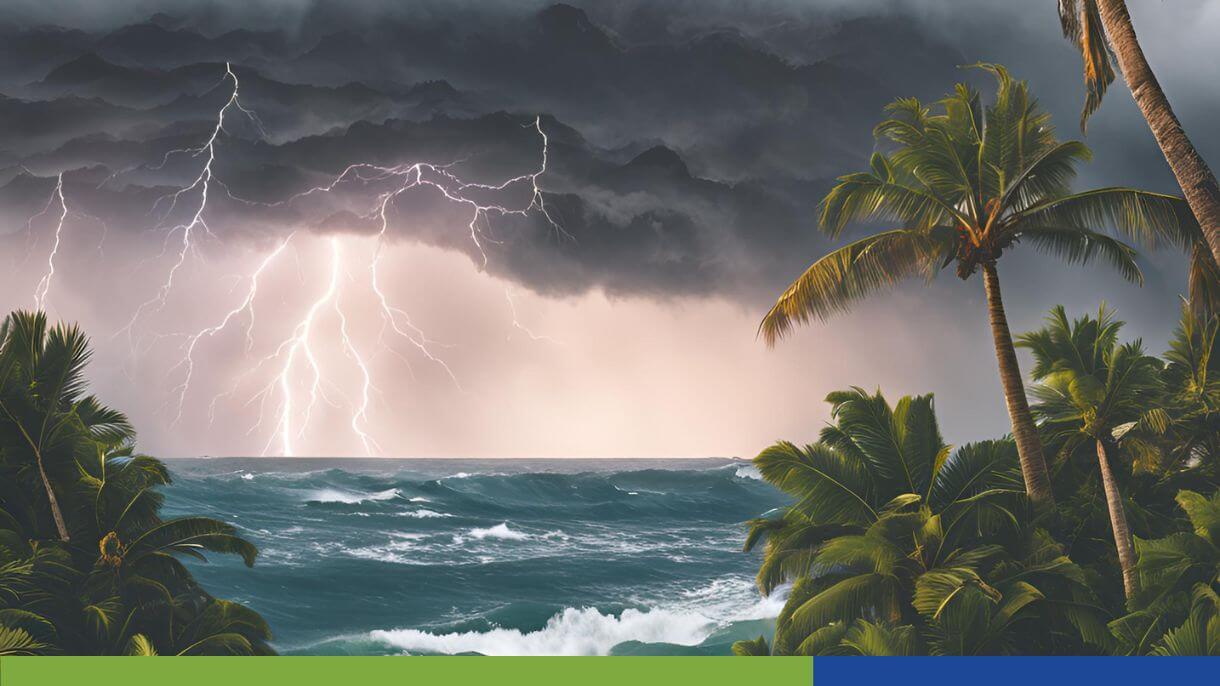
Understanding the Stages of Severe Weather: Tropical Storms

Tropical storms are a common occurrence in many coastal regions, especially during hurricane season. They can bring heavy rainfall, strong winds, and flooding. Being prepared and informed about these weather systems is essential to stay safe and protect your property. Here, we break down the stages of tropical storms, from their formation to their potential transformation into hurricanes. We’ll also explain some key terms you’ll hear on the news, so you can better understand what’s happening when severe weather approaches.
The Stages of a Tropical Storm
1. Tropical Disturbance
The first stage of a tropical storm is called a tropical disturbance. This is when an area of thunderstorms forms over warm ocean waters. At this point, the system is not yet organized enough to become a storm, but it can still bring rain and gusty winds to nearby areas. Think of it as a storm with potential to increasing its severity.
These disturbances are monitored closely, as they may develop into more intense storms over time.
2. Tropical Depression
If the disturbance becomes more organized and the winds within it reach up to 38 mph, it advances to a tropical depression. At this stage, you might hear about it on the news as it starts to gain some attention. While tropical depressions are not as powerful as full-fledged tropical storms, they can still cause flooding due to heavy rains, especially in coastal or low-lying areas.
The key difference between a tropical depression and a tropical storm is the wind speed. Once those winds strengthen, the system moves to the next stage.
3. Tropical Storm
When the wind speeds reach between 39 and 73 mph, the system is classified as a tropical storm. This is when things start getting serious. Tropical storms can bring torrential rainfall, strong winds, and coastal flooding. They may also produce tornadoes.
At this point, the storm is usually given a name. Naming storms helps the public keep track of warnings and updates. If you live in an area prone to tropical storms, you’ll want to be prepared by having emergency supplies and knowing your local evacuation routes.

4. Hurricane
If the storm’s winds exceed 74 mph, it is upgraded to a hurricane. Hurricanes are categorized into five levels based on wind speed:
- Category 1: 74-95 mph
- Category 2: 96-110 mph
- Category 3: 111-129 mph
- Category 4: 130-156 mph
- Category 5: 157 mph and above
The stronger the winds, the more damage a hurricane can cause. High winds, storm surges (a rise in sea level that pushes water onto land), and flooding are common dangers during hurricanes.
How to Prepare for a Tropical Storm
While not all tropical storms turn into hurricanes, it’s important to be prepared for the worst. Here are some steps you can take:
- Create an emergency kit with essentials like water, non-perishable food, medications, batteries, and a flashlight.
- Stay informed by tuning in to local weather updates and alerts from trusted sources.
- Secure your home by boarding up windows, reinforcing doors, and moving outdoor furniture inside to avoid damage from strong winds.
- Know your evacuation plan in case you need to leave quickly. Make sure everyone in your household is familiar with the route.
Stay Safe and Stay Prepared
Tropical storms can be unpredictable, but understanding their stages and the associated risks can help you stay safe and prepared. From the early signs of a tropical disturbance to the more severe stages of a hurricane, being informed allows you to respond effectively and protect yourself, your family, and your home. Stay aware, stay safe, and make sure you have a plan in place for when severe weather strikes!